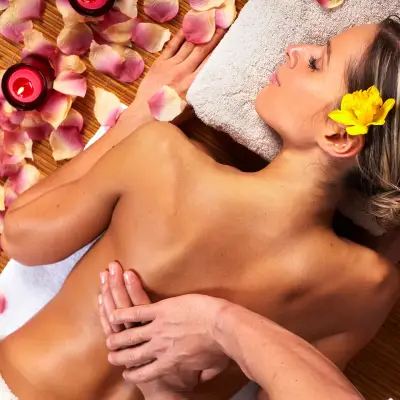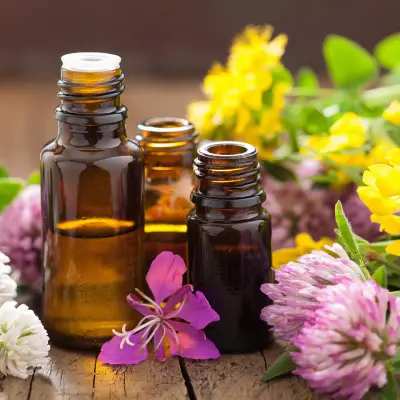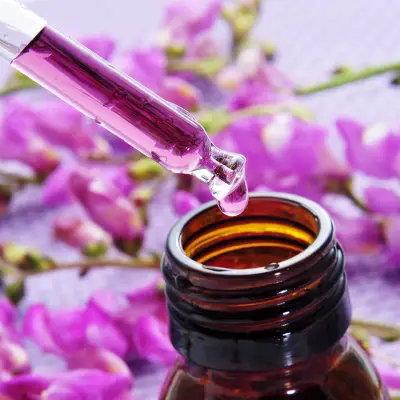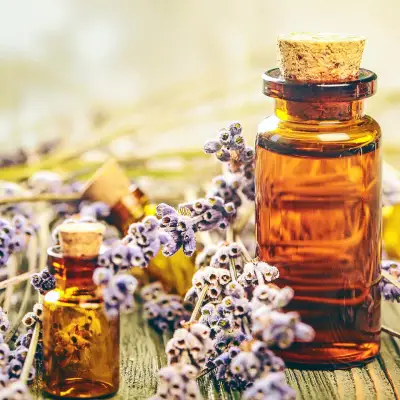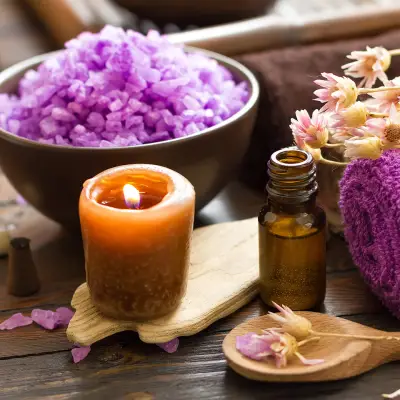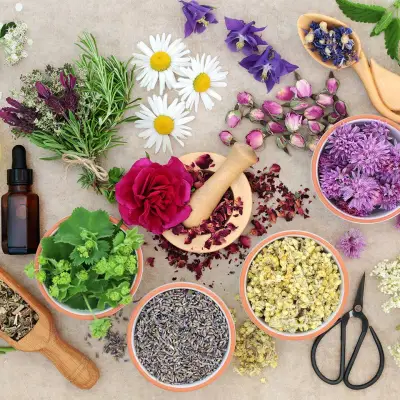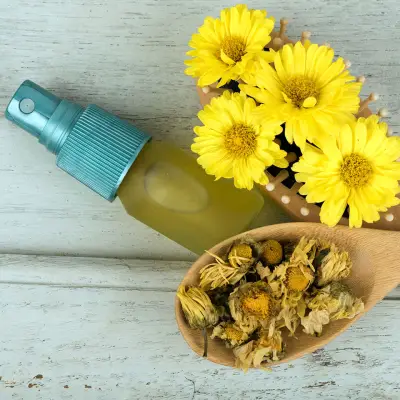If you're exploring natural ways to care for your skin, chances are you've come across myrrh essential oil. Perhaps you've read about its use in ancient traditions, or maybe you're curious after spotting it on the ingredients list of a skincare product.
This guide explores everything you need to know about myrrh essential oil for the skin. Along the way, we’ll also look at its spiritual associations and how you can get the most out of this powerful resin oil.
This article is for informational purposes only and does not constitute medical advice. Always consult with a qualified healthcare professional before starting any new skincare treatment, especially if you have underlying health conditions or allergies.
Jump to:
Recommended for you!
Best SellersWhat is Myrrh Oil?
Myrrh essential oil comes from the resin of the Commiphora tree, native to North Africa and the Middle East. The tree exudes a thick, amber-coloured sap that hardens into droplets or ‘tears’ when exposed to air. This resin is then steam-distilled to produce the essential oil.
Myrrh is a fragrant gum resin with a long-standing history of medicinal, cosmetic, and spiritual use. Known for its earthy, smoky aroma, myrrh has been part of human culture for over 5,000 years.
Is Myrrh Oil Good for the Skin?
Myrrh oil is highly regarded for its skin-nourishing properties. It’s particularly helpful for dry, ageing, or irritated skin due to its calming, protective, and rejuvenating effects. For centuries, myrrh has been used to support skin health and healing, and modern skincare continues to value its benefits. Here are some of the key ways myrrh oil can support your skin:
- Helps reduce the appearance of fine lines and wrinkles
- Supports skin healing and regeneration
- Hydrates and strengthens the skin’s barrier
- Soothes irritation and inflammation
- Assists with uneven skin tone and blemishes
Myrrh Essential Oil Benefits for Skin
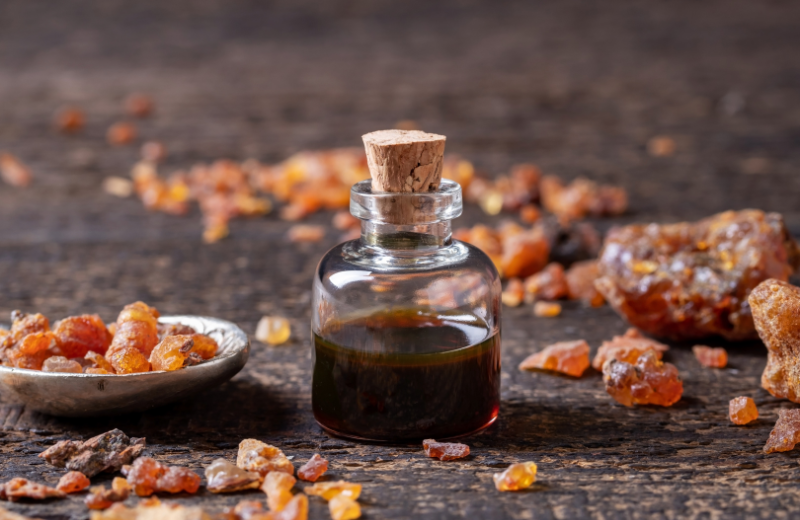
Whether you’re hoping to calm irritated skin, reduce the appearance of ageing, or encourage healing, myrrh essential oil brings a range of natural benefits. Let’s explore how myrrh oil can help your skin look and feel its healthiest:
Hydration and Moisture Retention
If your skin feels dry or tight, myrrh oil may help restore moisture. When diluted and applied topically, it can help strengthen the skin’s natural barrier, locking in hydration and preventing further water loss. This makes it an excellent choice for those with dry, flaky, or mature skin.
Soothing Irritation and Redness
Thanks to its anti-inflammatory properties, myrrh oil can be helpful in calming skin that’s inflamed, itchy, or irritated. It may ease symptoms of eczema or psoriasis when used as part of a gentle skincare routine.
Wound Healing Support
Historically, myrrh was used to clean wounds and prevent infection. Modern research supports this traditional use, as myrrh essential oil contains antimicrobial compounds that may assist the healing of minor cuts, scrapes, and blemishes. It helps keep the skin clean while encouraging tissue regeneration.
Combating Signs of Ageing
One of the best-known benefits of myrrh oil is its antioxidant power. Antioxidants protect the skin from oxidative stress caused by free radicals, which can lead to wrinkles, dullness, and age spots. By supporting skin renewal, myrrh can contribute to a more youthful, radiant appearance.
Evens Skin Tone
Myrrh oil has been known to help with hyperpigmentation and uneven skin tone. It may gently promote clearer, more balanced-looking skin over time, especially when combined with other nourishing oils like frankincense or rosehip.
How to Use Myrrh Essential Oil on Your Skin
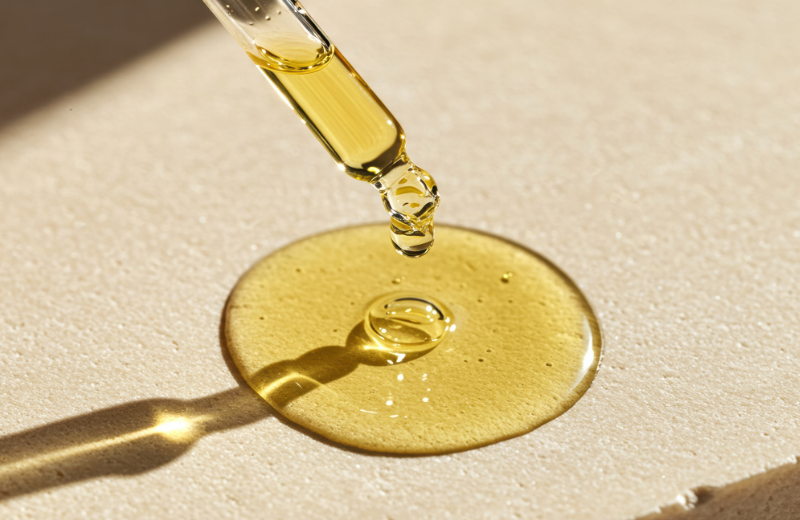
Using myrrh essential oil in your skincare routine can be effective, but it’s important to use it correctly to avoid irritation and get the best results.
- Dilute Before Applying: Myrrh oil should always be diluted with a carrier oil before touching your skin. This reduces the risk of sensitivity and helps it spread evenly. For facial care, a safe dilution is 1–2 drops of myrrh oil per 1 teaspoon (around 5ml) of carrier oil such as jojoba, sweet almond, or grapeseed oil.
- Mix with Moisturiser: You can add myrrh oil to your favourite moisturiser to enhance its calming and anti-ageing properties. Start with 1–2 drops per 30ml of cream or lotion, and adjust as needed depending on how your skin reacts.
- Spot Treatment: To help soothe blemishes or encourage the healing of minor skin marks, apply diluted myrrh oil directly to the area. Using it once or twice a day may help calm inflammation and support recovery, just be sure to test for sensitivity first.
- Facial Steam or Massage: Add a drop or two of myrrh oil to a bowl of hot water and gently steam your face for several minutes. Alternatively, blend it with a carrier oil for a relaxing facial massage. Both methods can help nourish the skin while boosting circulation and absorption.
- Use with Caution: Never apply undiluted myrrh oil directly to the skin, especially the face. Doing so could cause dryness or irritation, particularly if your skin is sensitive. Always dilute it properly to maintain your skin’s comfort and natural balance.
Frequently Asked Questions About Myrrh Oil for Your Skin
What is myrrh traditionally used for?
Historically, myrrh was used in embalming, perfumery, wound care, and religious rituals. The Egyptians used myrrh for embalming and skincare. In traditional Chinese medicine and Ayurveda, it’s also been used for pain relief and circulation.
What does myrrh do for the human body?
Myrrh has anti-inflammatory, antimicrobial, and analgesic effects. Internally, it has been used (under professional supervision) for digestive and oral health, while externally it supports skin healing and pain relief.
Can you put myrrh oil directly on gums?
Only if it’s extremely diluted. Myrrh oil has been used for oral health, including gum infections, due to its antibacterial effects. But it’s best to use myrrh-infused mouthwashes or toothpastes rather than essential oil alone.
Can you brush your teeth with myrrh?
Yes — some natural toothpastes contain myrrh for its antiseptic properties.
How many drops of myrrh essential oil should you use?
Usually, 2–3 drops per tablespoon of carrier oil is a safe dilution. If using in a diffuser, 3–5 drops is sufficient.
Who should not use myrrh?
Myrrh oil is not recommended during pregnancy, as it may stimulate uterine contractions. It should also be used cautiously by people with sensitive skin, and it’s best to do a patch test before applying it more widely.
What are the side effects of myrrh essential oil?
Possible side effects include skin irritation, allergic reaction, or, in rare cases,an upset stomach if ingested. Never consume it unless directed by a qualified professional.
What does myrrh smell like?
Myrrh has a rich, earthy, slightly smoky scent with warm, balsamic notes. It’s grounding and often used in meditation blends.
What is myrrh oil used for spiritually?
Myrrh oil is commonly used in spiritual rituals to promote grounding, reflection, and purification. Myrrh essential oil benefits emotional wellbeing by calming the mind and supporting stillness.
Does myrrh affect hormones?
Some traditional texts suggest myrrh may have mild effects on hormones, especially related to menstruation, but scientific evidence is limited.
How does myrrh affect the brain?
Myrrh’s aroma may reduce stress and anxiety, possibly by interacting with the limbic system — the part of the brain responsible for emotions and memory.
Is frankincense the same as myrrh?
Frankincense and myrrh come from different trees and have distinct scents and properties. Frankincense is lighter and more citrusy, while myrrh is deeper and smokier.
Can you swallow myrrh oil?
Swallowing myrrh oil should only be done under the supervision of a qualified health practitioner. Ingesting essential oils can be harmful if not done correctly.
What does myrrh essential oil mix well with?
Recommended for you!
Best SellersStudy Our Aromatherapy Diploma Course for £29
If you’re fascinated by the benefits of myrrh oil, why not turn your interest into a skill? At Centre of Excellence, we offer an Aromatherapy Diploma Course that explores different essential oils, blending techniques, safety precautions, and how to apply your knowledge at home or professionally. As a special offer, you can access the Aromatherapy Diploma Course for just £29!

